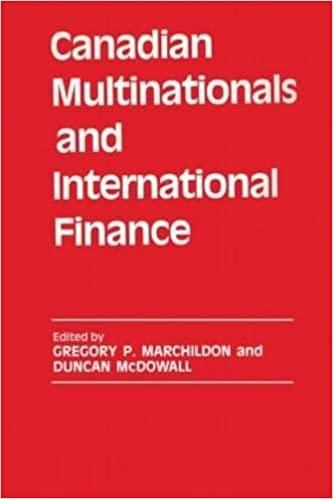Question
Many methods are used to reduce currency exposure and to take positions in foreign markets without incurring excessive exchange risk. First, an investor can rearrange
Many methods are used to reduce currency exposure and to take positions in foreign markets without incurring excessive exchange risk. First, an investor can rearrange a portfolio so as to increase its risk level in a foreign market without increasing its currency exposure. For stocks, this means buying equities with higher betas and selling those with lower betas. This makes the portfolio more sensitive to local market movements without increasing its sensitivity to currency fluctuations. For bonds, this means adjusting the duration of the foreign portfolio to increase the portfolio's sensitivity to foreign interest rates without increasing its currency exposure.
How can an international portfolio manager who wants to invest in equity of countries where the currency is expected to weaken hedge the currency exposure? Explain the pros and cons of investing solely on the foreign stock versus the stock and a hedge.
Step by Step Solution
There are 3 Steps involved in it
Step: 1

Get Instant Access to Expert-Tailored Solutions
See step-by-step solutions with expert insights and AI powered tools for academic success
Step: 2

Step: 3

Ace Your Homework with AI
Get the answers you need in no time with our AI-driven, step-by-step assistance
Get Started


